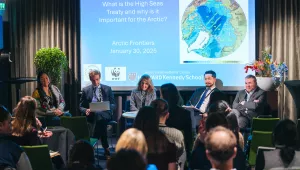ESD Working Paper Series
Note
Paper submitted for CESUN 2014 — Fourth International Engineering Systems Symposium to be held June 8–11, 2014 at Stevens Institute of Technology.
ABSTRACT
Water resources development options are usually selected on a least-cost basis. While economic considerations are dominant in choosing projects, there are also a mix of other factors including social demands, political expediency, social equity, and environmental considerations that impact final decisions and development of water supply systems. Understanding local priorities in water resource management decisions can allow for forming expectations of future regional water availability. In this research, we propose that future water availability in arid regions may be assessed by considering key projects that have been identified or planned by regional experts. Using Multi-Criteria Decision Analysis methods as a framework to organize set of decision criteria and their relative salience, the likelihood of selection (and development) of a project can be determined and used to form expectations of future regional water availability. We use this approach in a case study for Jordan, and find that large-scale desalination projects — that have been in the planning books for decades — are now most likely to be pursued and implemented in the country. Finally, we discuss strengths, limitations, and the general applicability of this method for assessing future water availability in other arid regions.
Download the entire working paper here: http://esd.mit.edu/WPS/2014/esd-wp-2014-10.pdf
Siddiqi, Afreen, Farah Ereiqat and Laura Diaz Anadon. “Assessing Future Water Availability in Arid Regions Using Composition and Salience of Decision Criteria.” Massachusetts Institute of Technology, March 2014
The full text of this publication is available via Massachusetts Institute of Technology.







